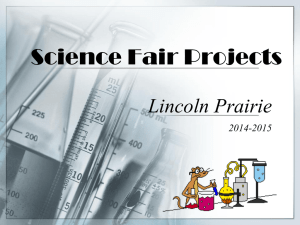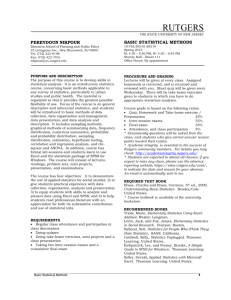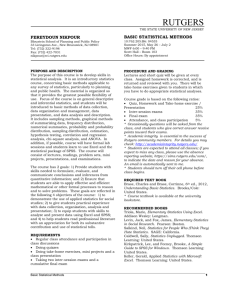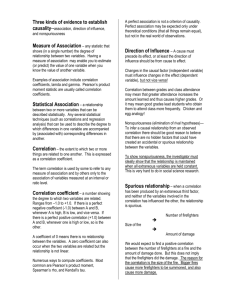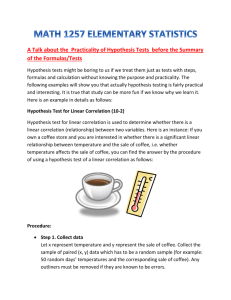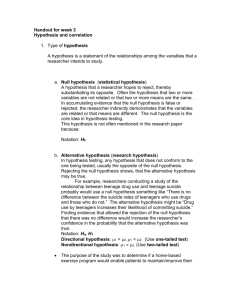Testing your hypothesis
advertisement
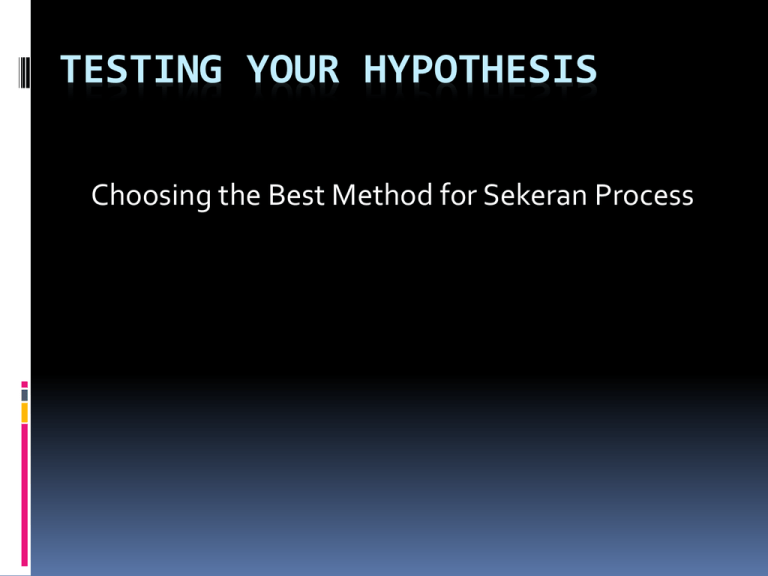
TESTING YOUR HYPOTHESIS Choosing the Best Method for Sekeran Process Abstract Various tools and methods are used to check the hypothesis statement. Once the data is collected it is represented in a manner such that a conclusion can be drawn. Hypothesis needs to be tested to ensure that the research is applicable in real life and decisions can be based on them. introduction A hypothesis is a tentative statement that proposes a possible explanation to some phenomenon or event. A useful hypothesis is a testable statement which may include a prediction. Once a general hypothesis is formed from a given data it is necessary to ensure that it is correct and applicable in real life. This would entail the process of gathering data pertaining to the variables identified in the hypothesis and then using the results to create a correlation between the variables. A conclusion is then drawn from the results to establish whether the hypothesis derived was correct or not. Samples, surveys, observations and historical data is used to collect information on different variables. This is then represented either through graphs, correlation or t-testing. Once the results are displayed we can check our hypothesis and determine the implications of our result. The surveys, assessment tools or instruments used to gather data on the variables within the hypothesis could be: The survey design question airs Interviews (telephone or face to face) Historical research Simulation Designs Sampling design Non-Probability Samples Accidental Samples Quota Samples Purposive Samples. Probability Samples Cluster Sampling Stratified Random Sample Simple Random Sample random number generator and create simulated data for not more than 25 participants (test subjects) in the study using the ranges of values for the variables Customer Loyalty Customer Satisfaction Number of Items 15 15 Arithmetic Mean 25 18 146 138 Sum of Square Deviations Methods to test your hypothesis: graphical representation, correlation & t-test. Different methods of checking the hypothesis are available such as use of graphs, correlation of data and the use of t tests. In our situation the best possible approach would be the use of correlation. Correlation takes into account two variables and then determines the relationship between them (for example by plotting them on graph). We are able to analyze how changes in one variable can impact the other and vice versa. The correlation could also be squared in order to find out the variability of the data concerned by squaring the correlation coefficient. Even though correlation tells us that the two variables are related, but we cannot say anything about whether one caused the other. This method does not allow us to come to any conclusions about cause and effect. Graphs and t tests can be used to support the conclusions arrived from the correlation. Reasons for choosing Correlation Testing Method Customer Loyalty and Customer Satisfaction are two very important factors in Sekeran Process. These two are inter-related Correlation Methods provides best analysis to measure the trends of relationship between two factors Graphical Charts although are good for overview, but for in-depth details these are not appropriate






